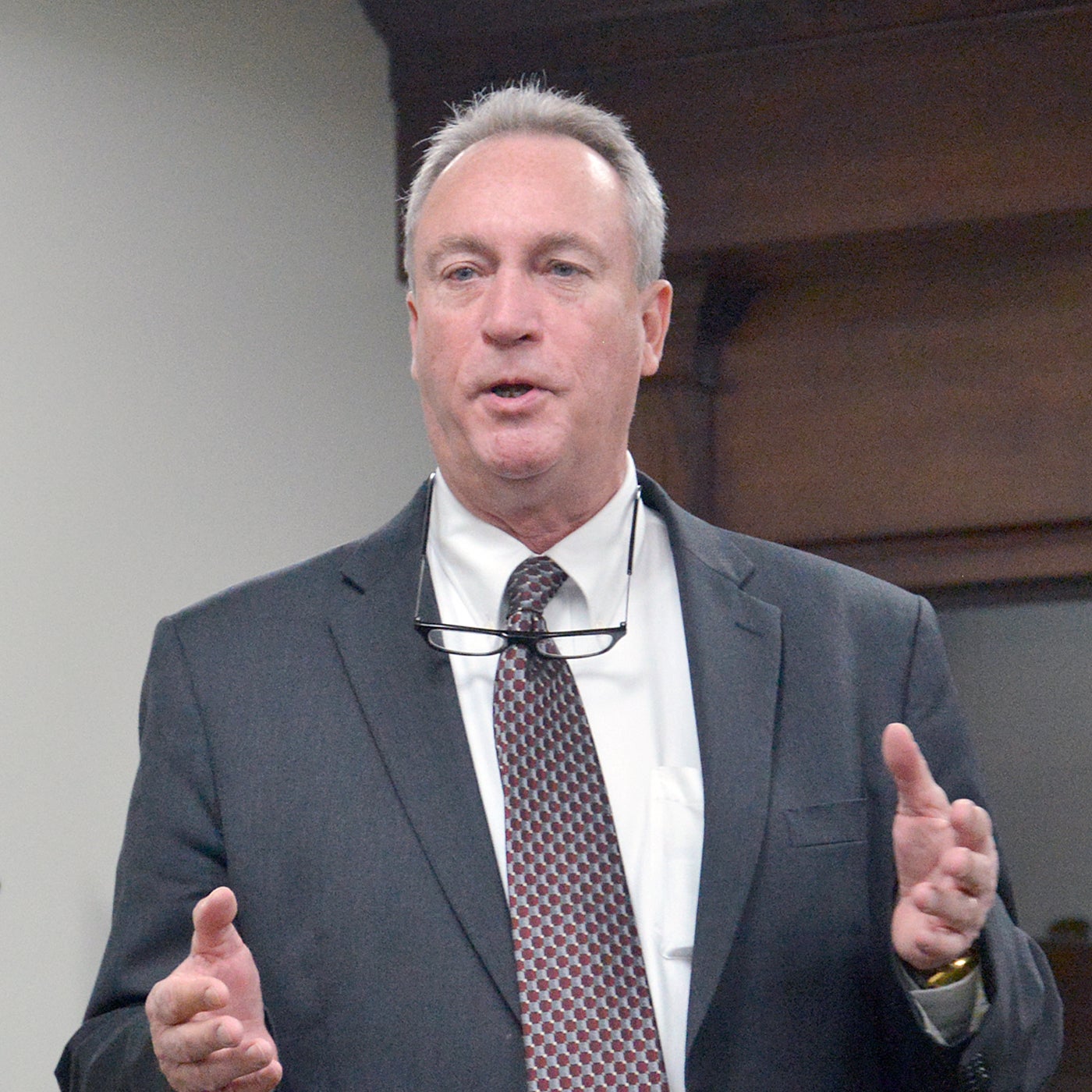Fighting the drug epidemic ‘one community at a time’
Published 6:39 pm Thursday, January 24, 2019

- Photo by Robin Hart/robin.hart@amnews.com Van Ingram, executive directof of Kentucky Office of Controlled Substance Policy, speaks at the quarterly meeing of the Local Emergency Planning Committee on Wednesday.
The drug addiction epidemic facing our nation didn’t occur overnight and neither will the outcomes of solutions being enacted right now, according to an expert on drug control policy who spoke at the the Local Emergency Planning Committee meeting on Wednesday.
Van Ingram, executive director for the Kentucky Office of Drug Control Policy, told the group central Appalachia — Kentucky and West Virginia in particular — was “ground zero for this whole epidemic. And it didn’t happen by accident.”
He said several years ago, Purdue Pharma looked for areas across the U.S. with the highest prescriptions of pain pills per capita when researching a marketing campaign for its drug Oxycontin.
The top eight of 10 markets identified were in Kentucky and West Virginia, he said.
“At that time, there was already a serious problem with Valium and Xanax” and with sedatives and anti-anxiety drug use in eastern Kentucky, he said. So Purdue heavily targeted that area, “And it worked.”
Eventually the drug epidemic spread to every state.
The problem, however, wasn’t recognized by legislators until it reached the New England area.
“I’ve been preaching about this for a decade, to put an end to this problem. I’ve been telling people in Washington for over a decade about the drug problem in Kentucky and Appalachia. It was a bunch of poor people in central Appalachia dying but nobody cared. But we cared. People who lived here cared, but we couldn’t get anybody in D.C. to pay attention,” including the FDA and the DEA, Ingram said.
“It shutters me to think of the lives we could have saved if people had listened when we tried to tell them the prescription opioids were killing our people,” he said.
“What makes this opioid epidemic different, is the huge over exposure that our state and our nation has had. … It took millions and millions and millions of us that never would have dreamed of going out and buying methamphetamines before the drug epidemic. Millions of us that never would have ever thought about going out and buying cocaine. Most of us wouldn’t have even smoked marijuana. But we took these dangerous, powerful, powerful pills and we laid them around our houses like they were nothing,” Ingram said.
“We didn’t appreciate the danger of these,” and neither did the doctors or hospitals, he said. And the manufacturer “lied at every turn” about the strong addictive properties of its drug.
He said drug companies told doctors if their patients kept experiencing pain then they weren’t prescribing enough pain killers.
“Lie after lie after lie. So that’s what made this so different. That’s what’s made it so widespread.”
Ingram said the federal and state governments are now giving resources, support and passing legislation to help fight drug addiction, but each community will have to figure out what it needs to battle drug addictions and how to handle all of the problems associated with it.
“Washington cannot fix this. Frankfort cannot fix this. We can help. We can provide resources and assistance. But it’s going to happen one community at at time. … This drug epidemic that we’re in is going to be solved one community at a time.”
However, the state is “turning the corner” in the battle against drug use, Ingram said. Some of the laws his office has helped pass and other programs it supports include putting strict restrictions on pain clinics; initiating Kentucky All Schedule Prescription Electronic Reporting (KASPER), which is a controlled substance prescription monitoring system; immunity laws protecting drug users from being arrested if they help an overdose victim; and syringe exchange programs.
Ingram said the KODCP will use federal funds it’s received for the past two years and with those expected for the next two years, to remove as many barriers as possible for people to get treatment. “We can’t help them if they’re dead,” Ingram said.
Ingram said his office has funds available to make sure nobody is turned away for not being able to afford treatment. They are also making it easy for those seeking treatment for addiction to immediately locate facilities with space available, in just three clicks at findhelpnowky.org .
In the future, KODCP will be having transitional housing vouchers available and employment training for recovering drug addicts; trying to convince hospitals to care for detoxing addicts and supporting medication assisted treatment (MAT).
In addition, the agency will soon offer the “Too Good For Drugs” curriculum for 86 school districts in the state.They need to catch kids “early on” about the dangers of drug addiction, Ingram said.
His office is trying to save the next generation. Ingram said he tells legislators, “The things we do today we won’t see the fruit of, probably in our careers. A lot of the things we do today about prescribing will be 15 years before the full impact of that happens.”






